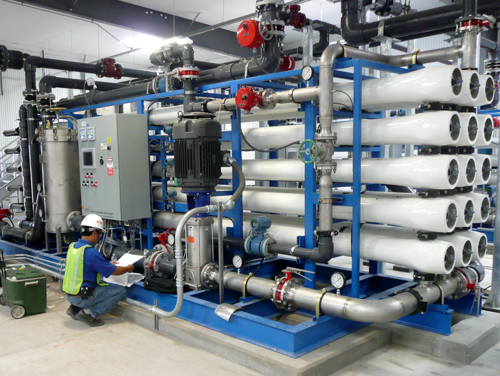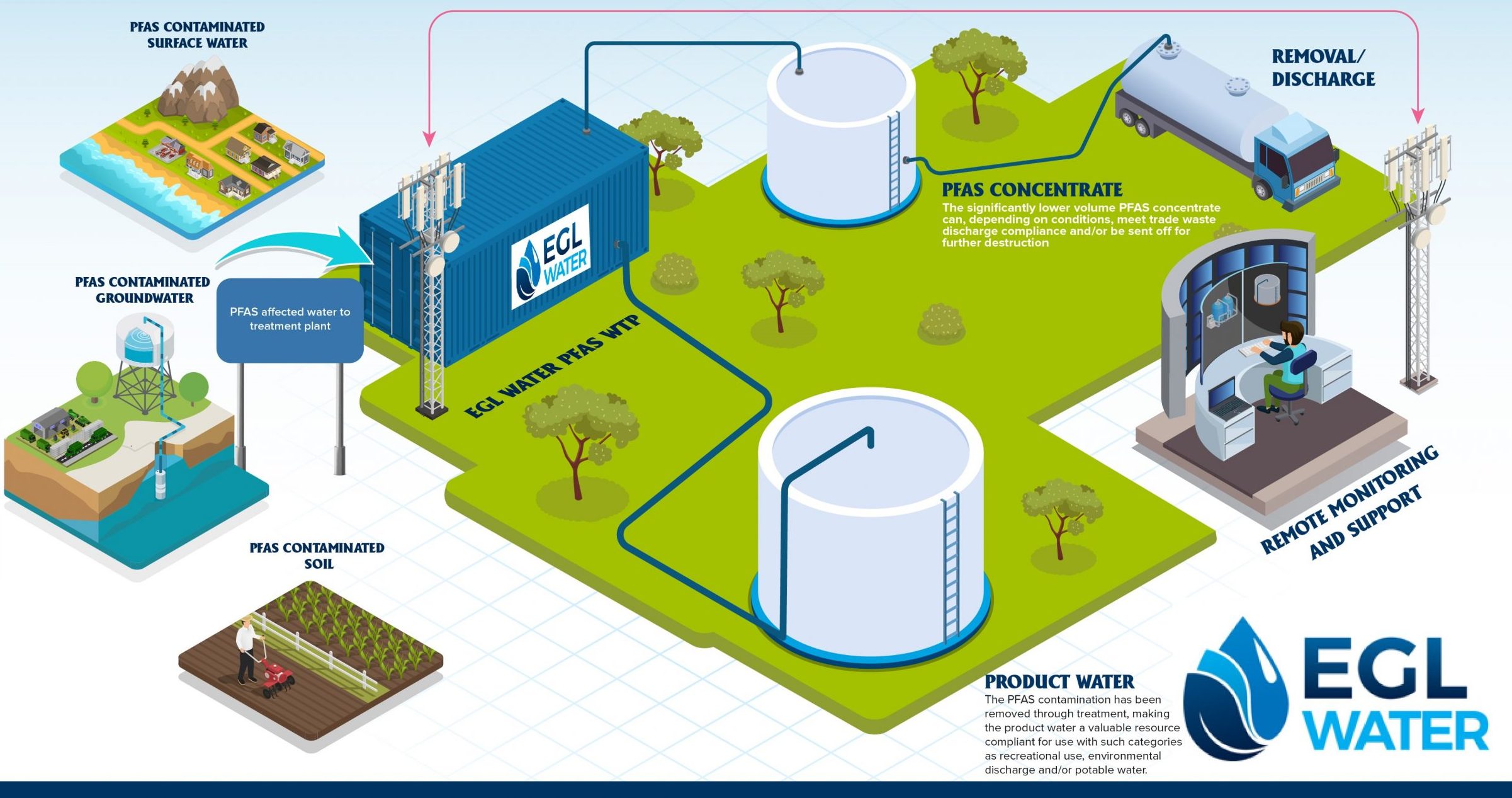Just How PFAS Treatment Guarantees Tidy and Sustainable Water
The visibility of PFAS, frequently called "permanently chemicals," poses considerable obstacles to water top quality and public health and wellness. Advanced therapy innovations, consisting of activated carbon adsorption and membrane purification, have become reliable services to alleviate these contaminants. By utilizing these methods, neighborhoods can not only accomplish cleaner water yet also foster lasting techniques that safeguard ecological communities. However, the ramifications of these therapies expand beyond instant health advantages; they increase crucial concerns concerning long-term water management methods that must be addressed to guarantee a durable future. What does this mean for our approach to water sustainability?

Comprehending PFAS Contamination
PFAS, or per- and polyfluoroalkyl materials, have become a considerable ecological problem due to their widespread prevalence and determination in the atmosphere. These artificial chemicals have actually been used in numerous industrial applications and customer products, including non-stick pots and pans, water resistant clothing, and food product packaging, as a result of their special properties such as water and grease resistance.
The contamination of dirt and water resources by PFAS happens largely via commercial discharges, firefighting foam use, and leaching from garbage dumps. pfas management. When released, these substances are resistant to destruction, leading to their buildup in the setting. This perseverance elevates essential concerns, as PFAS can take a trip fars away through groundwater and surface area water supply, impacting drinking water supplies and environments

Health And Wellness Dangers of PFAS
The perseverance of PFAS in the setting elevates substantial health and wellness issues for individuals subjected to these compounds. Known as "permanently chemicals," PFAS do not break down easily and can accumulate in bodies with time. Research study has linked PFAS direct exposure to numerous negative health and wellness results, including immune system dysfunction, liver damages, and boosted risk of certain cancers cells - pfas management. Significantly, studies have actually shown elevated cholesterol degrees and prospective influence on reproductive and developing health and wellness, specifically in expectant individuals and infants.
The ubiquity of PFAS in customer items, such as non-stick kitchenware, water-repellent textiles, and food packaging, further amplifies the danger of exposure. Consuming water infected with PFAS is a substantial issue, as these chemicals can seep into groundwater resources. Vulnerable populations, including children and those living near industrial websites, might deal with intense risks as a result of their developing systems and prospective for greater exposure levels.
As recognition of these health dangers remains to expand, regulatory companies are starting to develop guidelines for PFAS levels in drinking water. Public health initiatives are necessary to minimize direct exposure and secure communities from the long-lasting impacts of these unsafe materials.

Innovative Therapy Technologies
Exactly how can we efficiently take on the difficulties postured by PFAS contamination in water resources? Innovative therapy technologies are arising as important remedies in the mission for tidy water. These methods concentrate on the elimination or destruction of per- and polyfluoroalkyl compounds (PFAS), which are notorious for their determination in the click site environment.
One appealing strategy is adsorption using sophisticated products, such as activated carbon and ion exchange dig this resins. These products have actually shown effectiveness in recording PFAS molecules from water. Another significant technology is membrane filtering, which makes use of nanofiltration and reverse osmosis to different impurities at the molecular level, therefore supplying an obstacle against PFAS.
Additionally, advanced oxidation procedures (AOPs) use strong oxidants to damage down PFAS compounds into safe results. This method is especially efficient for dealing with very polluted water resources. Bioremediation strategies, employing certain microbes, are also being discovered to degrade PFAS.
As research study continues, hybrid systems that integrate numerous technologies may offer enhanced performance, attending to the intricacies of PFAS contamination. The advancement and execution of these cutting-edge treatment modern technologies are important actions toward making certain the safety and security and sustainability of our water sources.
Advantages of Efficient PFAS Treatment
Properly dealing with PFAS contamination in water sources significantly boosts public wellness and ecological safety. PFAS, often described as "permanently chemicals," are resistant to destruction and can build up in the human body, causing major health threats such as cancer, liver damages, and immune system dysfunction. By implementing reliable treatment methods, neighborhoods can reduce direct exposure to these damaging substances, inevitably enhancing the wellness results of their populaces.
Additionally, successful PFAS therapy adds to the preservation of local ecological communities. Polluted water can detrimentally impact marine life and disrupt the fragile balance of regional environments. By making sure clean water, therapy procedures safeguard biodiversity and keep environmental check my source honesty.
Furthermore, effective PFAS removal can cultivate public self-confidence in water high quality. When communities are assured that their alcohol consumption water is free from unsafe contaminants, it promotes a feeling of safety and security and well-being. This trust is necessary for community engagement and support for continuous water administration campaigns.
Future of Water Sustainability
Amid growing issues regarding water top quality and deficiency, the future of water sustainability depends upon innovative methods and joint initiatives. As areas deal with the impending dangers of impurities like PFAS, the development of advanced treatment technologies is vital. These modern technologies not just concentrate on the elimination of unsafe materials yet additionally advertise the reuse and recycling of water, therefore reducing overall demand.
Moreover, effective water governance plays an important function in making sure lasting methods. Policymakers need to incorporate scientific study with governing structures to establish clear guidelines for water usage and therapy. Stakeholder involvement, consisting of regional communities and markets, promotes a sense of common duty and motivates sustainable practices across various industries.
Financial investment in facilities is additionally critical; upgrading aging systems to integrate modern-day purification and purification techniques can substantially enhance water quality. Embracing environment-friendly innovations, such as all-natural filtering systems, can provide environment-friendly services.
Eventually, the future of water sustainability depends on an all natural strategy that integrates technology, plan, and community involvement. By focusing on these elements, we can guard our water resources for generations ahead, ensuring tidy and lasting water for all.
Final Thought
Finally, the efficient therapy of PFAS is necessary for ensuring clean and lasting water. By employing sophisticated modern technologies such as activated carbon adsorption, membrane layer purification, and advanced oxidation processes, areas can significantly minimize the wellness risks connected with these contaminants. The combination of these therapy approaches sustains ecosystem security and improves biodiversity. Inevitably, durable PFAS treatment techniques add to long-term resilience in water administration, promoting public count on water top quality and advertising lasting practices.